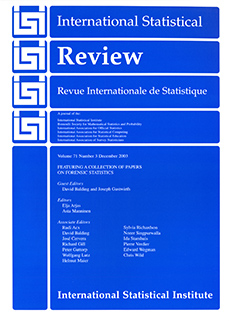Abstract
Environmental systems are complicated. They include very intricate spatio-temporal processes, interacting on a wide variety of scales. There is increasingly vast amounts of data for such processes from geographical information systems, remote sensing platforms, monitoring networks, and computer models. In addition, often there is a great variety of scientific knowledge available for such systems, from partial differential equations based on first principles to panel surveys. It is argued that it is not generally adequate to consider such processes from a joint perspective. Instead, the processes often must be considered as a coherently linked system of conditional models. This paper provides a brief overview of hierarchical approaches applied to environmental processes. The key elements of such models can be considered in three general stages, the data stage, process stage, and parameter stage. In each stage, complicated dependence structure is mitigated by conditioning. For example, the data stage can incorporate measurement errors as well as multiple datasets with varying supports. The process and parameter stages can allow spatial and spatio-temporal processes as well as the direct inclusion of scientific knowledge. The paper concludes with a discussion of some outstanding problems in hierarchical modelling of environmental systems, including the need for new collaboration approaches.
Citation
Christopher K. Wikle. "\bf Hierarchical Models in Environmental Science." Internat. Statist. Rev. 71 (2) 181 - 199, August 2003.
Information




